$0.00
No products in the cart.
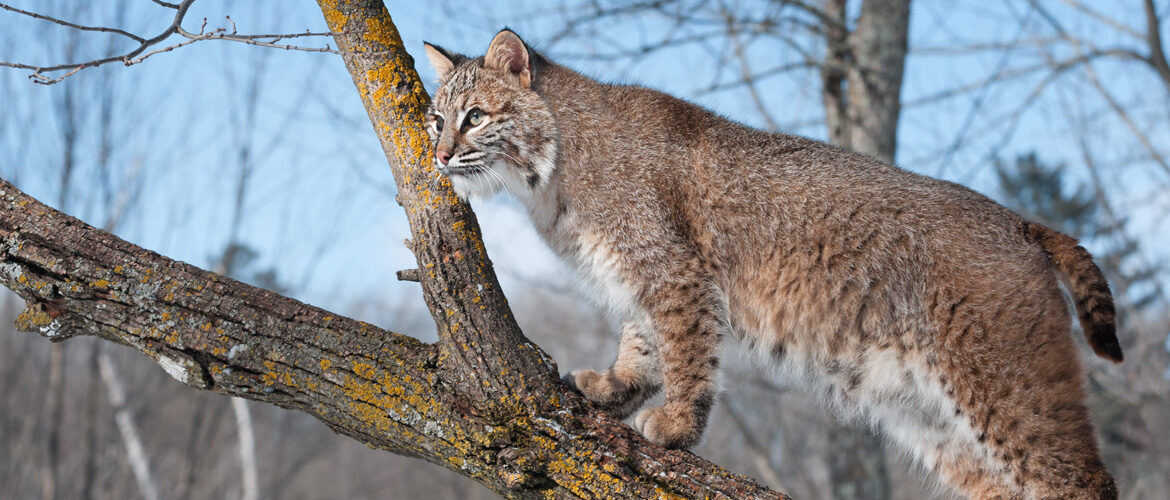
North America is home to six wild cats which includes one true big cat, the jaguar. In addition, the cougar, and smaller wild cats such as the ocelot, jaguarundi, bobcat (Lynx rufus), and Canada lynx. Of these six species, only four are hunted throughout their range in some form being the lynx, bobcat, cougar and the jaguar.
While hunting in general is highly regulated, perhaps no animal is under such close harvest scrutiny as these animals. With this, comes high visability from the public and interest groups in general, and as such the North American cats that are subject to management via hunting practices are subjected to political pressures.
The Cougar has previously been covered in “Game Species of the World – Mountain Lion” and therefore will be excluded here. For ease of explanation, each cat is separated within in section being Taxonomy, Size and distribution & Habitat.
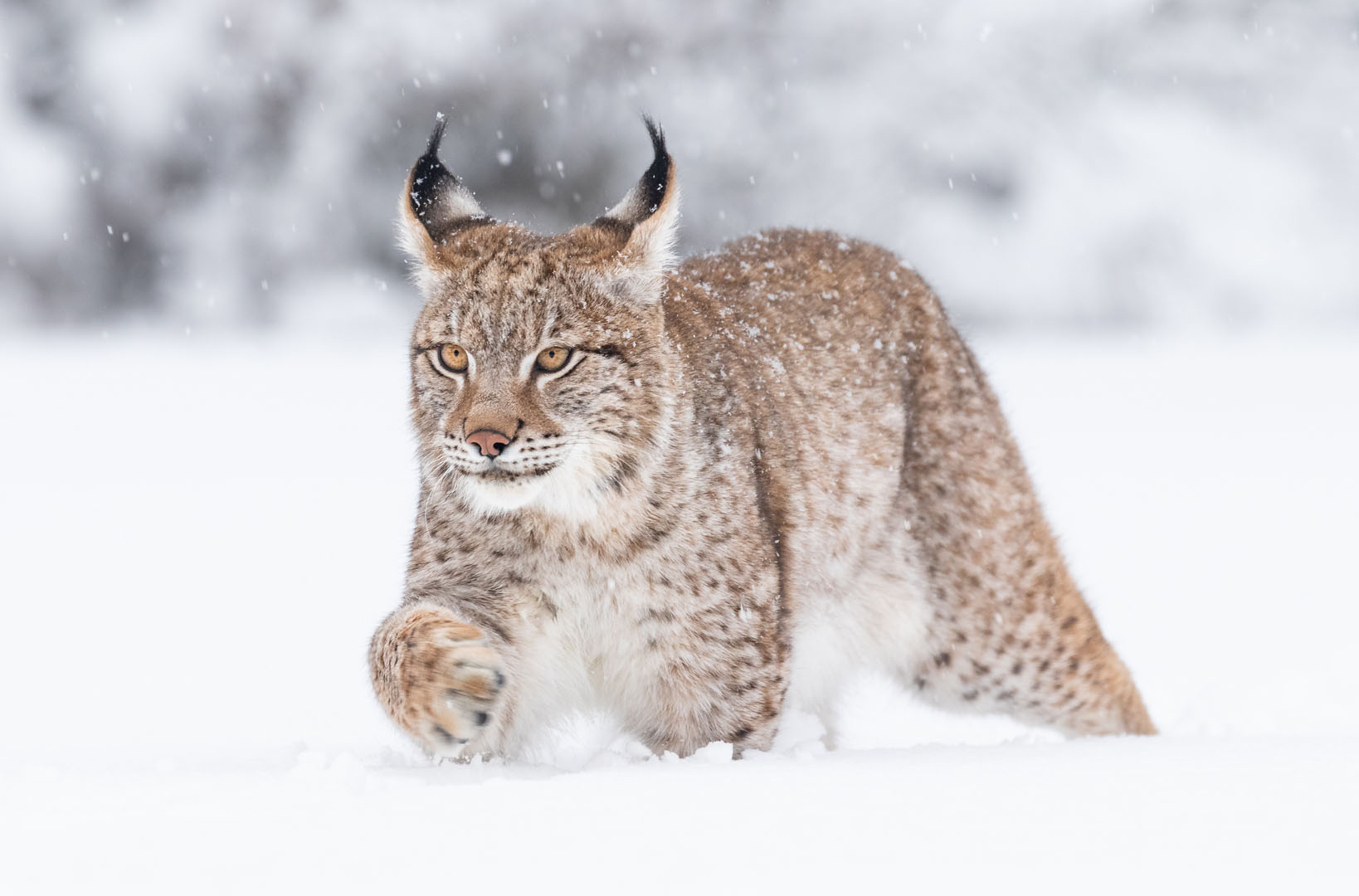
Bobcat
Felis rufa was the scientific name proposed by Johann Christian Daniel von Schreber in 1777 (Schreber, J. C. D. (1778). “Der Rotluchs”). In the 19th and 20th centuries some 11 specimens were described however the validity of these subspecies was challenged in 1981 because of the minor differences between specimens from the various geographic regions in North America (Read, J. A. (1981))
Since the revision of cat taxonomy in 2017, only two subspecies are recognized as valid taxa:
The bobcat is thought to have evolved from the Eurasian lynx (L. lynx), which crossed into North America by way of the Bering Land Bridge during the Pleistocene, with progenitors arriving as early as 2.6 million years ago (Meaney, C. & Beauvais, G. P. (2004)). It first appeared during the Irvingtonian stage around 1.8 million years ago. The first bobcat wave moved into the southern portion of North America, which was soon cut off from the north by glaciers; and, the population evolved into the modern bobcat around 20,000 years ago. A second population arrived from Asia and settled in the north, developing into the modern Canada lynx (L. canadensis). Hybridization between the bobcat and the Canada lynx may sometimes occur (Mills, L. S. (2006)). The populations east and west of the Great Plains were probably separated during Pleistocene interglacial periods due to the regions becoming increasingly arid (Reding D. M. (2011)).
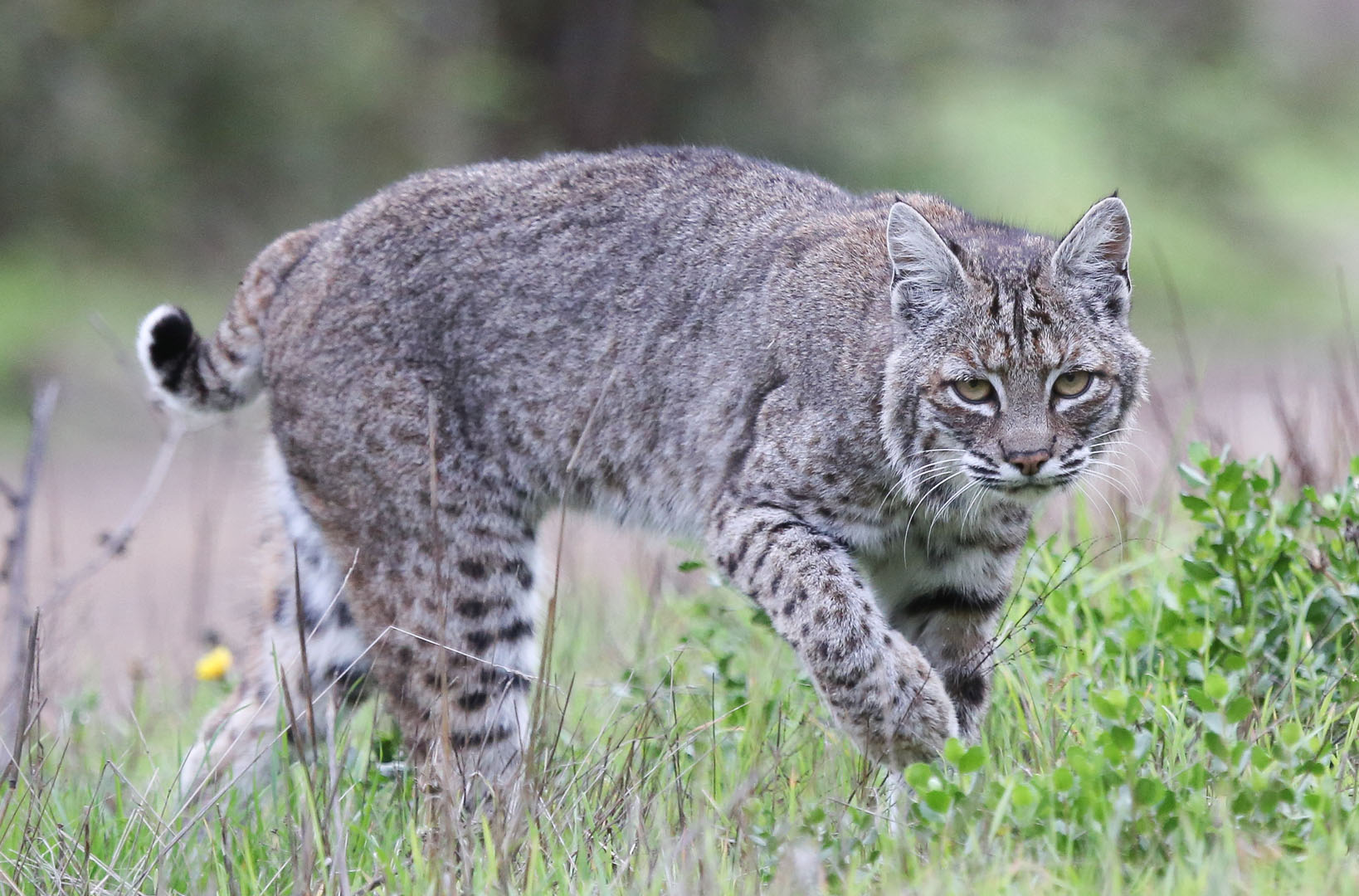
Lynx
Lynx (plural lynxes or lynx) is both the common and scientific name for a taxon of medium-sized wild cats of North America, Europe, and Asia, characterized by tufted ears, long legs, short tails, large paws, and short heads. Part of the cat family Felidae, the taxonomic group Lynx generally is placed at the genus level; however, some authorities place this taxon as a subgenus within the genus Felis.
There are four extant species of lynx: The Canadian lynx (Lynx canadensis), Eurasian lynx (Lynx lynx), Iberian lynx (Lynx pardinus), and bobcat (Lynx rufus) (web source – newworldencyclopedia.org). The genus Lynx shares a clade with the genera Puma, Prionailurus and Felis dated to 7.15 million years ago; Lynx diverged approximately 3.24 million years ago. The four recognised species are:
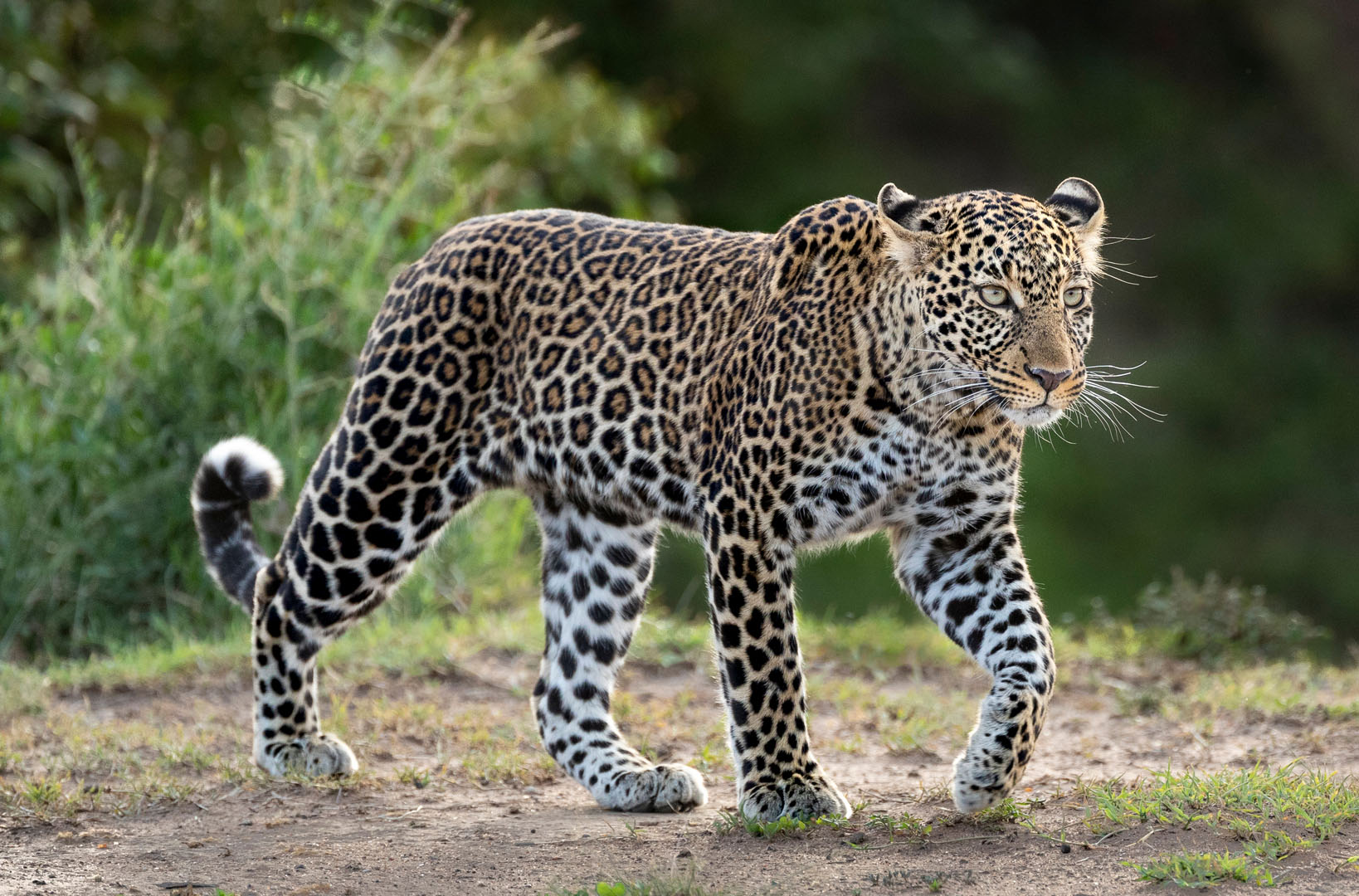
Jaguar
The jaguar (Panthera onca) is a large cat species and the only living member of the genus Panthera native to the Americas. The word “jaguar” is possibly derived from the Tupi-Guarani word yaguara meaning ‘wild beast that overcomes its prey at a bound’ (Seymour, K. L. (1989). “Panthera onca“).
In 1758, Carl Linnaeus described the jaguar in his work Systema Naturae and gave it the scientific name Felis onca(Linnaeus, C. (1758)).
In the 19th and 20th centuries, several jaguar type specimens formed the basis for descriptions of subspecies. In 1939, Reginald Innes Pocock recognized eight subspecies based on the geographic origins and skull morphology of these specimen (Pocock, R. I. (1939)).
By 2005, nine subspecies were considered to be valid taxa (Wozencraft, W. C. (2005):
All cats walk on four feet, in a digitigrade manner—that is on their toes. Their hind legs are longer and stronger than their fore legs, which gives them strength, mainly for sprinting and leaping, but typically not stamina for long distance running. Cats have claws on their feet that are used for gripping prey, for fighting, and for climbing. As with most cats, the claws can be retracted into the toes, which helps keep them sharp.
The typical gestation period of cats generally speaking, will last somewhere between 63 to 65 days, some lynx may stretch this out to 74 days and the jaguar, which has no defined breeding period will gestate for between 93 to 105 days.
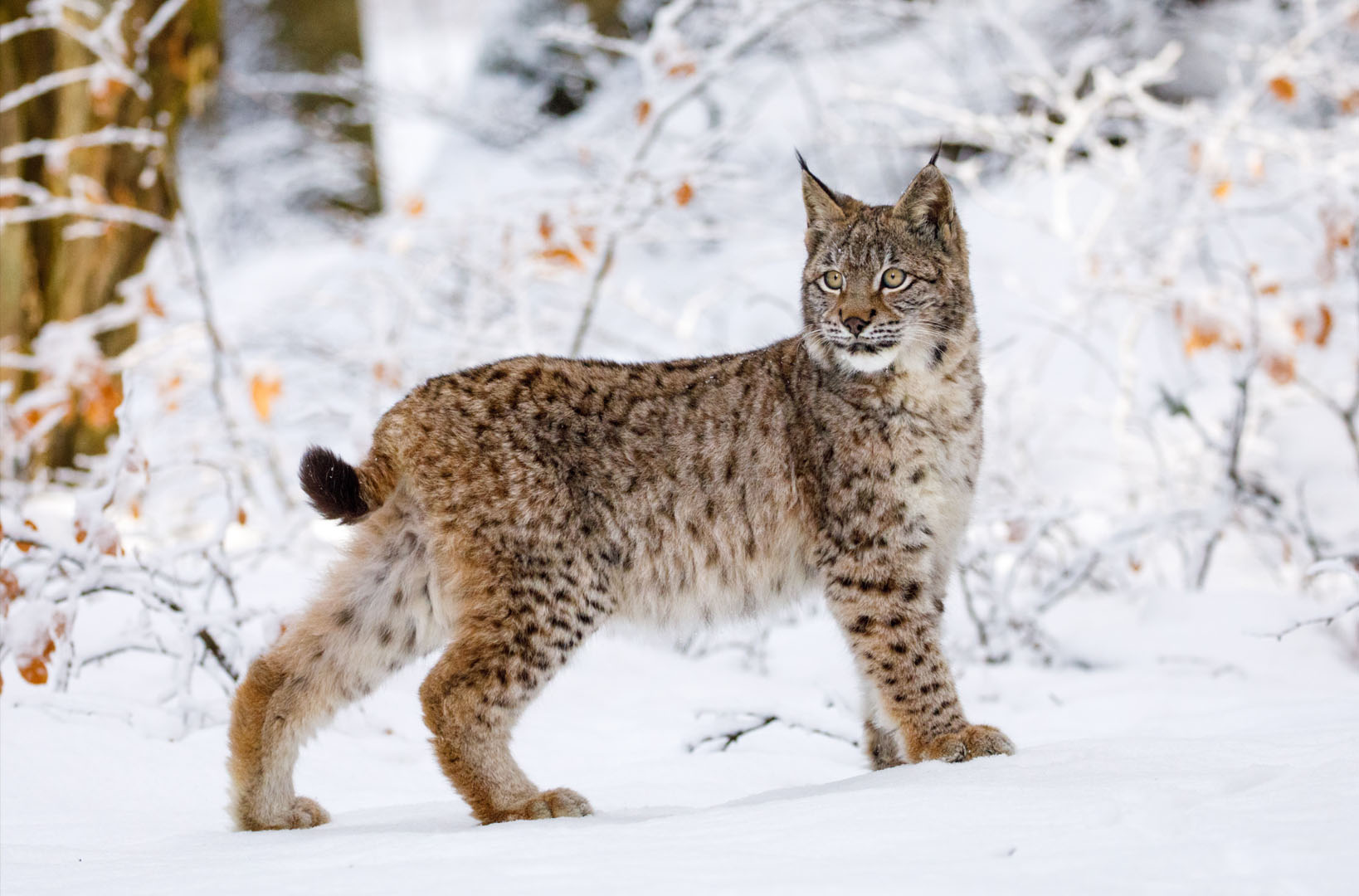
Bobcat
The Bobcat are the most abundant wild cats in the U.S. They often get confused with the lynx since they look very similar. These cats are very adaptable and live in forest, mountain, and semi-desert areas (web source wolfcenter.org). Stories featuring the bobcat, in many variations, are found in some Indigenous cultures of North America, with parallels in South America. A story from the Nez Perce, for instance, depicts the bobcat and coyote as opposed, antithetical beings (Yalman, Nur (1996)).
In a Shawnee tale, the bobcat is outwitted by a rabbit, which gives rise to its spots. After trapping the rabbit in a tree, the bobcat is persuaded to build a fire, only to have the embers scattered on its fur, leaving it singed with dark brown spots (“Florida Bobcat Bio Facts”)).
The bobcat (Lynx rufus), is also sometimes known as the red lynx, is a medium-sized cat native to North America. It ranges from southern Canada through most of the contiguous United States to Oaxaca in Mexico. It is listed as Least Concern on the IUCN Red List since 2002, due to its wide distribution and large population. Although it has been hunted extensively both for sport and fur, populations have proven stable (Kelly, M.; Morin, D. & Lopez-Gonzalez, C.A. (2016)).
The bobcat has distinctive black bars on its forelegs and a black-tipped, stubby (or “bobbed”) tail, from which it derives its name. It reaches a total length (including the tail) of up to 125 cm
The bobcat resembles other species of the midsize genus Lynx, but is on average the smallest of the four. Its coat is variable, though generally tan to greyish-brown, with black streaks on the body and dark bars on the forelegs and tail. Its spotted patterning acts as camouflage. The ears are black-tipped and pointed, with short, black tufts. Generally, an off-white colour is seen on the lips, chin, and underparts. Bobcats in the desert regions of the southwest have the lightest-coloured coats, while those in the northern, forested regions are darkest. Kittens are born furred and already have their spots (Cahalane, V. H. (2005)).
The bobcat is an adaptable predator inhabiting wooded areas, semidesert, urban edge, forest edge, and swampland environments. It remains in some of its original range, but populations are vulnerable to extirpation by coyotes and domestic animals. Though the bobcat prefers rabbits and hares, it hunts insects, chickens, geese and other birds, small rodents, and deer. Prey selection depends on location and habitat, season, and abundance. Like most cats, the bobcat is territorial and largely solitary, although with some overlap in home ranges. It uses several methods to mark its territorial boundaries, including claw marks and deposits of urine or faeces. The bobcat “breeds” in the Northern winter into spring and has a gestation period of about two months.
Lynx
Lynx tend to be found in remote areas, typically away from human interaction. The ones found in North America, known as the Canada Lynx, are smaller than the species found overseas, the Eurasian Lynx.
All lynx have short tails and characteristic tufts of black hair on the tip of the ears. They have a ruff under the neck, which has black bars (not very visible), resembling a bow tie. They have large paws padded for walking on snow and long whiskers on the face. The body colour varies from light brown to grey; and occasionally, is marked with dark brown spots, especially on the limbs.
Interestingly, The Canadian lynx (Lynx canadensis) and the bobcat (Lynx rufus) differ in body proportions and markings, but are both in about the same size range. The bobcat has shorter legs, smaller paws, shorter ear tufts, and more spotted coat (pelage), with only the top of the tip of the tail black, versus the black-tipped tail of the Canadian lynx (FWS 2000). The paws of the bobcat have one half of the surface area of the Canadian lynx. The Canadian lynx (also known as the Canada lynx and North American lynx) has hind legs that are longer than the front legs (FWS 2000), as with the bobcat. Adult males of Lynx canadensis average 10 kilograms in weight and 85 centimetres in length from head to tail, while females average 8.5 kilograms and 82 centimetres (FWS 2000).
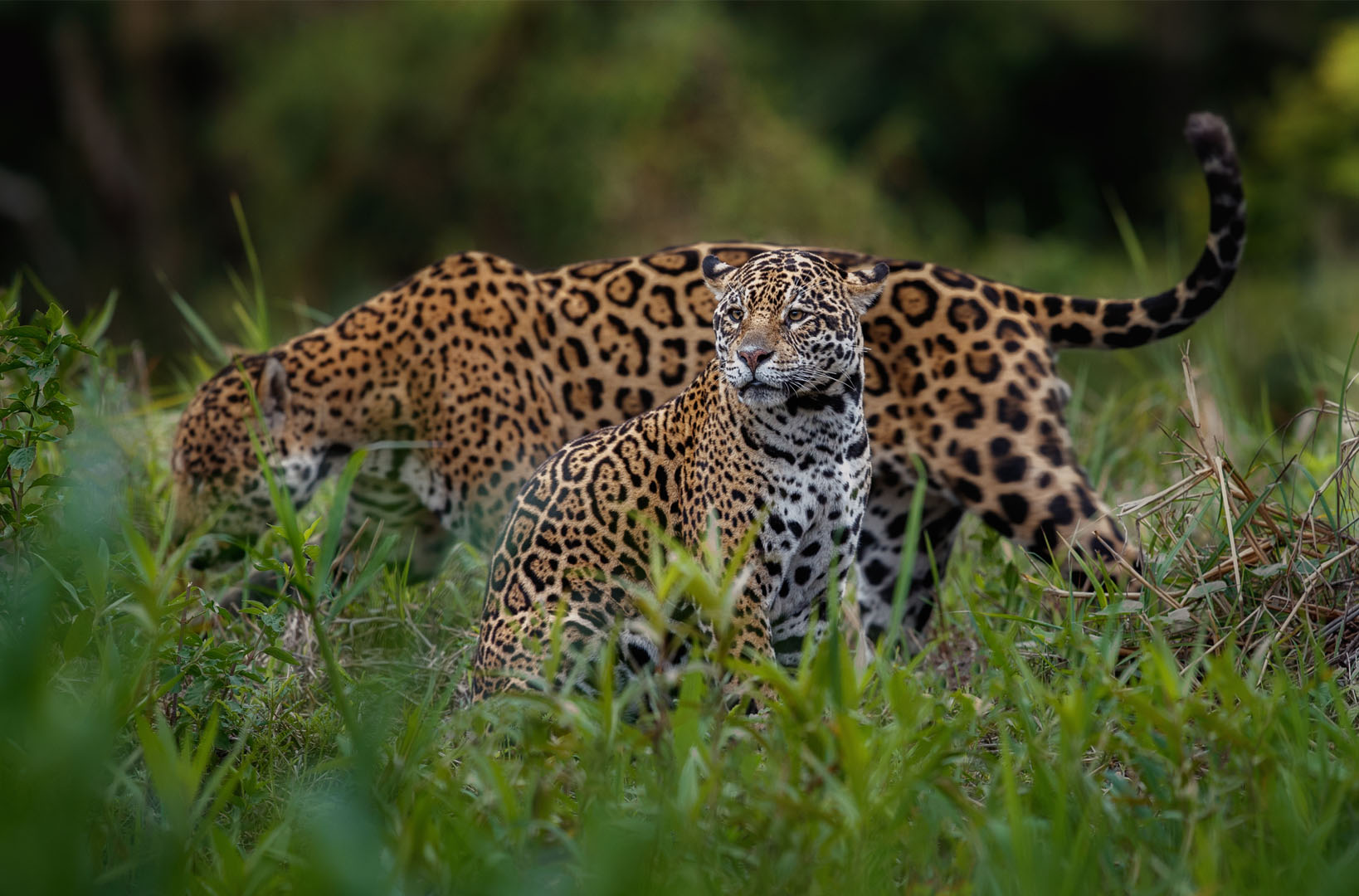
Jaguar
The jaguar is a compact and muscular animal. It is the largest cat native to the Americas and the third largest in the world, exceeded in size only by the tiger and the lion (Hayward, M. W.; Kamler, J. F.; Montgomery, R. A. & Newlove, A. (2016)).
The Jaguar stands between 68 to 75 centimetres tall at the shoulders (Rich, M.S. (1976)) and its size and weight vary considerably depending on sex and region; weights in most regions are normally in the range of 56–96 kilograms. This range has been exceeded by larger than average males which have been recorded to weigh as much as 158 kilograms. The smallest females from Middle America weigh about 36 kilograms. The jaguar is sexually dimorphic, with females typically being 10–20% smaller than males. The length from the nose to the base of the tail varies from 1.12 to 1.85 meters and the thick tail is 45 to 75 centimetres long, interestingly, the shortest any big cat (Nowak, R.M. (1999)). Its muscular legs are also shorter than the legs of other Panthera species with similar body weight (Gonyea, W.J. (1976)).
Most notable of the jaguars size is that it does not follow Bergmans rule, as according to Nuanaez & Lindzeys work in “Food habits of jaguars and pumas in Jalisco, Mexico”, size tends to increase from north to south.
The jaguar’s coat ranges from pale yellow to tan or reddish-yellow, with a whitish underside and covered in black spots. Jaguars living in forests are often darker and considerably smaller than those living in open areas, possibly due to the smaller numbers of large, herbivorous prey in forest areas (Nowell, K. & Jackson, P. (1996)). Melanistic jaguars are also known as black panthers. The black morph is less common than the spotted animal (Brown, D.E. & Lopez-Gonzalez, C.A. (2001)).
It is worth noting that the jaguar closely resembles the leopard but is generally more robust, with stockier limbs and a more square head. The rosettes on a jaguar’s coat are larger, darker, fewer in number and have thicker lines, with a small spot in the middle (Gonyea, W.J. (1976)).

Bobcat
The bobcat is an adaptable species when it comes to habitat. Although it prefers woodlands –deciduous, coniferous, or mixed landscapes, it does not depend exclusively on it. It ranges from the humid swamps of Florida to desert lands of Texas or rugged mountain areas. It makes its home near agricultural areas, if rocky ledges, swamps, or forested tracts are present. The population of the bobcat depends primarily on the population of its prey; other principal factors in the selection of habitat type include protection from severe weather, availability of resting and den sites, dense cover for hunting and escape, and freedom from disturbance.
The bobcat’s range does not seem to be limited by human populations, but by availability of suitable habitat; only large, intensively cultivated tracts are unsuitable for the species. The animal may appear in back yards in “urban edge” environments, where human development intersects with natural habitats.
The historical range of the bobcat was from southern Canada, throughout the United States, and as far south as the Mexican state of Oaxaca, and it still persists across much of this area. In the 20th century, it was thought to have lost territory in the US Midwest and parts of the Northeast, including southern Minnesota, eastern South Dakota, and much of Missouri, mostly due to habitat changes from modern agricultural practices (McDowell, R. L. (2003)). While thought to no longer exist in western New York and Pennsylvania, multiple confirmed sightings of bobcats (including dead specimens) have been recently reported in New York’s Southern Tier and in central New York, and a bobcat was captured in 2018 on a tourist boat in Downtown Pittsburgh, Pennsylvania. The bobcat population in Canada is limited due to both snow depth and the presence of the Canada lynx. The bobcat does not tolerate deep snow, and waits out heavy storms in sheltered areas (National Park Service. Yellowstone National Park); it lacks the large, padded feet of the Canada lynx and cannot support its weight on snow as efficiently. The bobcat is not entirely at a disadvantage where its range meets that of the larger felid: displacement of the Canada lynx by the aggressive bobcat has been observed where they interact in Nova Scotia, while the clearing of coniferous forests for agriculture has led to a northward retreat of the Canada lynx’s range to the advantage of the bobcat. In northern and central Mexico, the cat is found in dry scrubland and forests of pine and oak; its range ends at the tropical southern portion of the country (Nowell, K. & Jackson, P. (1996)).
Lynx
The two Lynx species in North America, Canada lynx and bobcats, are both found in the temperate zone. Temperate being, the climates which occur in the middle latitudes which span between the tropics and the polar regions of Earth. While the bobcat is common throughout southern Canada, the continental United States and northern Mexico, the Canada lynx is present mainly in boreal forests of Canada and Alaska (Zielinski, William J.; Kucera, Thomas E. (1998))
The Lynx holds a tight predatory relationship with the snowshoe hare, The cyclic changes in abundance of the snowshoe hare (Lepus americanus Erxleben, 1777) and the Canadian lynx (Lynx canadensis) are well known, so much so, that these 9 to 11 year fluctuations are commonly discussed and generally accepted.
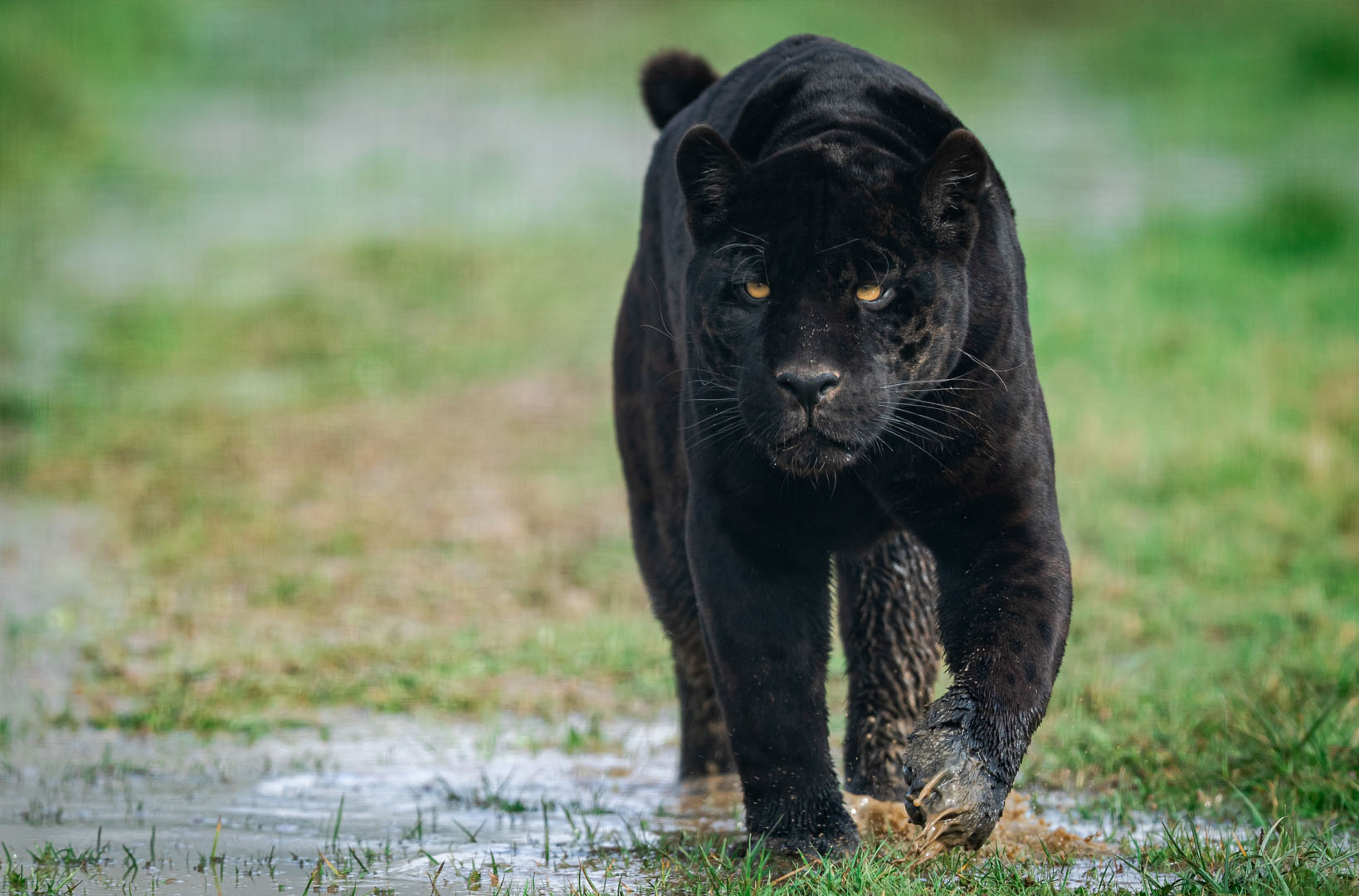
Jaguar
The modern jaguar’s ancestors probably entered the Americas from Eurasia during the Early Pleistocene via the land bridge that once spanned the Bering Strait. Today, the jaguar’s range extends from core Southwestern United States across Mexico and much of Central America, the Amazon rainforest and south to Paraguay and northern Argentina.
In the 19th century, the jaguar was still sighted at the North Platte River in Colorado and coastal Louisiana (Daggett, P. M. & Henning, D. R. (1974)). In 1919, sightings of jaguars were reported in the Monterey, California region. In 1999, its historic range at the turn of the 20th century was estimated at 19,000,000 km2 (7,300,000 sq mi), stretching from the southern United States through Central America to southern Argentina. By the turn of the 21st century, its global range had decreased to about 8,750,000 km2 (3,380,000 sq mi).
In 1949, the last female jaguar in the United States was hunted and killed in Arizona. Since then, some jaguars have been spotted in Arizona, near the US-Mexico border. Specifically, in their range, any hunting of jaguars is prohibited in Argentina, Colombia, French Guiana, Honduras, Nicaragua, Panama, Paraguay, Suriname, United States, Uruguay and Venezuela. Hunting of jaguars is restricted to “problem animals” in Brazil, Costa Rica, Guatemala, Mexico and Peru (Web source – https://jaguarssp.net/)
Cats have had diverse relationships with humans, ranging from rodent control, to household pets, to cultural icons and as such, the hunting of these animals continues be to under threat. While the Lynx are labelled as threatened in North America, trapping and hunting does still occur, typically with use of a hounds. Much like bobcats, hunting with hounds (to tree the cat) or trapping seems to be most effective with either species being known to be treed as a bycatch during a mountain lion hunt with hounds.
Jaguar hunting around the world is currently a grey area and should be approached with great caution.
The import of these animals (where hunting can occur) is subject to CITIES import conditions. Hunters should invest time in investigating these requirements prior to hunting.